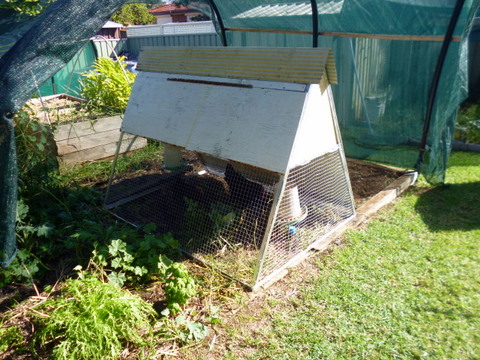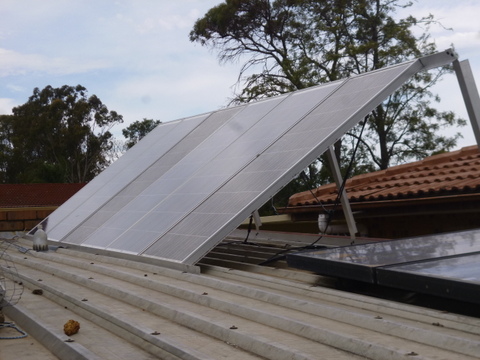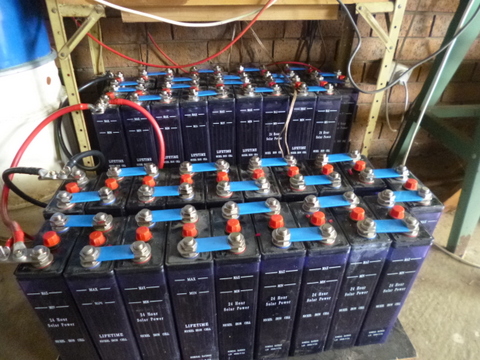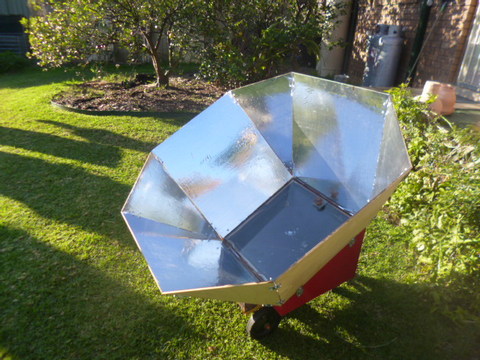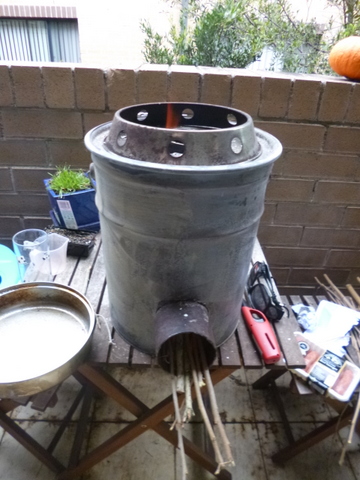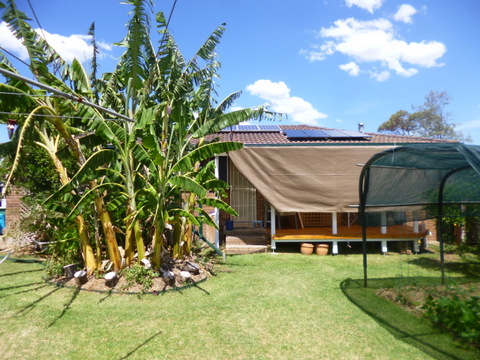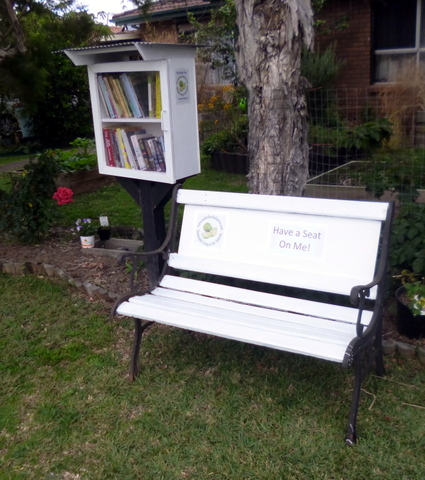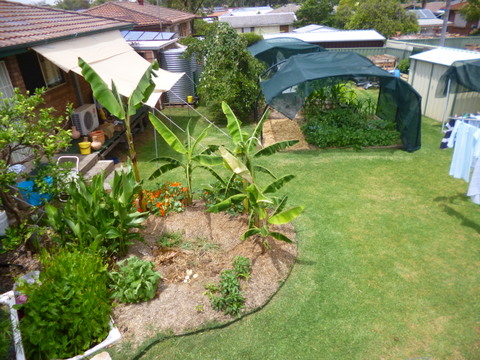Back in the late ‘70s I packed up my new bride and set off for the wilds of…………….. Western Sydney! Well it was a little bit wild back then. The estate had no shops and no public transport but the housing and the loans were cheap and so we found ourselves on a 600 m2 block with an east-west facing, brick veneer, 3 bedroom house.
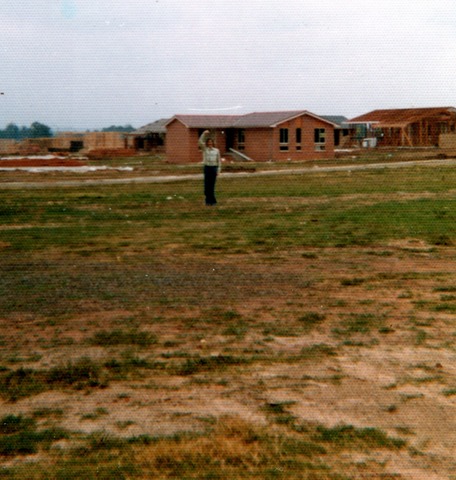
Me, Standing in the middle of our land, before the house was built!
After many threats to head bush we are still here, concentrating on living as self sufficiently and sustainably as we can in the suburban environment. Here are some of the things we are up to –
We grow as much of our own veggies as we can organically using open pollinated seed, which we save ourselves where we can. We make seed raising mix using worm castings, sand and cocopeat, once the seedlings are up we pot them on into newspaper pots and then plant them out when they are ready. I have developed a spreadsheet (see vegie plan) that follows a two weekly sow/pot on/plant out rotation. We have a small greenhouse that we use to raise seedlings and grow a bit of out of season stuff during winter. During summer we place shade cloth over the greenhouse and continue to use it to raise seedlings in.
I get in grass hay from a local supplier where I can or failing that, straw, and let it get worked over by chooks and then use it as mulch. We have 14 beds, half are about 2 metres x 1 metre and half are 3 metres x 1 metre . We fertilise mainly using a chook tractor which is designed to sit directly over a veggie bed with some compost and comfrey extract also used. The chook tractor spends two weeks on each bed twice a year. The chook tractor has 2 or 3 chooks in it and we can get up to 3 eggs a day but we also have the “Retirement Village”, a shed where the non-productive chooks still do meaningful work by digging over the hay and turning it into mulch.
The chook tractor has recently been upgraded. While they were previously made out of timber, regardless of how well I painted them (the last one had 3 coats!) they all only lasted about 5 years. The latest design is made from aluminium angle, bought in for another project but not used, and I expect a much longer life from this one!
We also have fruit trees – a mandarin and orange tree, half a dozen bananas in a banana circle in the back yard and a passionfruit vine growing up the side of the house. In the front yard we have a mulberry tree, two lilli pillies, olive, feijoa and two lime trees (one Tahitian, one Kaffir) and a couple of apples (one multi-grafted), a nectarine and macadamia nut. The apples, limes and macadamia are in a fruit tree circle based around a worm tower. The fruit tree circle also has a dwarf lemon and a curry leaf tree. Also there is now a small bed on our southern front yard boundary with a blood orange, dwarf fig and a replacement lemon since the one previously in the back yard passed on.
We have six recycled steel bathtubs; one which we use as a fishpond but also grows water chestnuts and an similar plant called Arrow with decorative arrow shaped leaves. Another houses our worm farm which helps us process our veggie waste and provides castings to make the seed rasing mix with. Two are in the front yard as wicking beds growing insectary plants and pumpkins etc. and the final two are in the back yard treating our wastewater as a constructed wetland.
We have a grid connected 1 kW photovoltaic system that has been in since the start of 2009, but we have had a stand alone system in place for over 30 years.
The system was originally based on a SolarexX44 BG photovoltaic panel, a BP Solar Panel of about 2.5 amps a Photowatt International PW 750 panel and 4 x 80 watt Solarex panels. The 12VDC was stored in two battery banks of 4 x 220 amp hour 6 volt batteries, wired to give 440 amphours of storage in each bank. One bank powered the house lights and the other powered a 12 volt fridge.
In 2016 we upgraded the system to the point where we are almost off grid. We now use nickel iron (NiFe) batteries, have a whole slew of new panels with many of the old panels referred to above being retired, a 3000watt inverter and manage the charging through a 50amp MPPT. Details of the new system are available here.
We also have a number of solar cookers including a solar oven which we can use to cook bread the year ‘round (it just takes a bit longer in winter.). Another type of solar cooker uses flat mirrors on a frame like a slice out of a parabolic dish to focus the sunlight on the bottom of a black painted stainless steel pot (good for frying and steaming). Due to the way we plant now we don’t produce a lot of excess veggies but we have a solar drier to process any excess we do get and for drying leaf crops to provid leaf powder for use as a nutrient supplement.
I have put together two rocket stoves, which is used to cook with a wok and burns small twigs efficiently to produce plenty of heat for cooking. Small twigs are available for the taking in our area, they literally fall off the native trees in the parks and roadsides.
We have 19,000 litres of water storage – 2 x 2500 litre galvanised steel water tanks on the back of the garage and a plastic 5500 litre tank at the side of the house and a 500 litre water butt off one of the sheds. We also have a 5000 litre tank beside the carport and the latest addition is a 3000 litre tank beside the garage, which is fed from the output of the 5000 litre tank beside the carpost. The 5500litre tank is connected to a 12volt pump which provides water to a tap at the back of the house which we use to water the veggies.
To save water we have introduced various types of low tech super efficient irrigation such as buried pipe, deep pipe, ollas and leaky pipe irrigation, the details of each being available here. We have also put in two systems for re-using greywater, the first chanelling water directly from our spa bath out into the banana circle and the second being a constructed wetland to purify water from the front loading washimg machine before running it onto fruit trees.
As part of our committment to our local community we have also installed a street library and community bench in the front of our house so that by passers can have a rest and read at the same time.
It is really an attitude more than anything else, looking at the reduce part of the trio of “Reduce, Reuse and Recycle” and have added "refuse" to the trio - refuse packaging and other stuff we don't need. We keep asking, “How can we do this ourselves, with what we have on hand?". To help us practice we have instituted 'No-Buy July' during which we allow a small amount of cash for surprise needs but mainly subsist on the garden and pantry, and reduce out travel to one tank of petrol for the month, making do with what we have. We are also working towards zero waste and zero plastic. Recently we have been working on two new projects, growing crickets as microlivestock for chicken feed (and maybe human feed as well!) and growing oyster mushrooms.
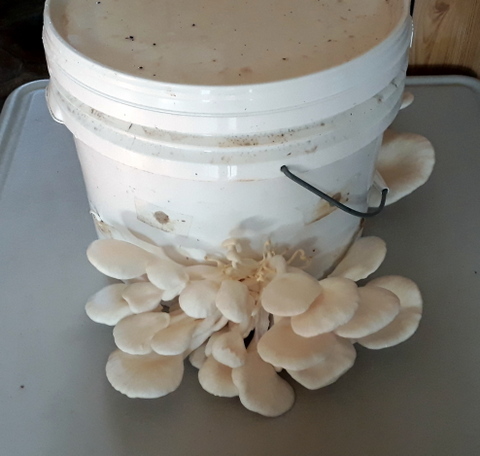
It is a journey and we are still working on how we can become more self reliant and sustainable. We hold a "Directors" meeting every October/November to look at how we are travelling on the plan and what changes need to be made and what the priorites should be for the coming year which manifests themselves in the To Do List . We are aslo still members to Permaculture Sydney West and I have completed a term as the President from 2016 to 2018. We also had our own St Clair Sustainable Living group, but that has been on hold for some time do to my work schedule and of course Covid. We are active on facebook and YouTube.
We open every year for sustainable house day and permaculture day and try and get the word out that more sustainable living in the city is not only possible, it’s fun!
Nev & Linda
25th July 2021



